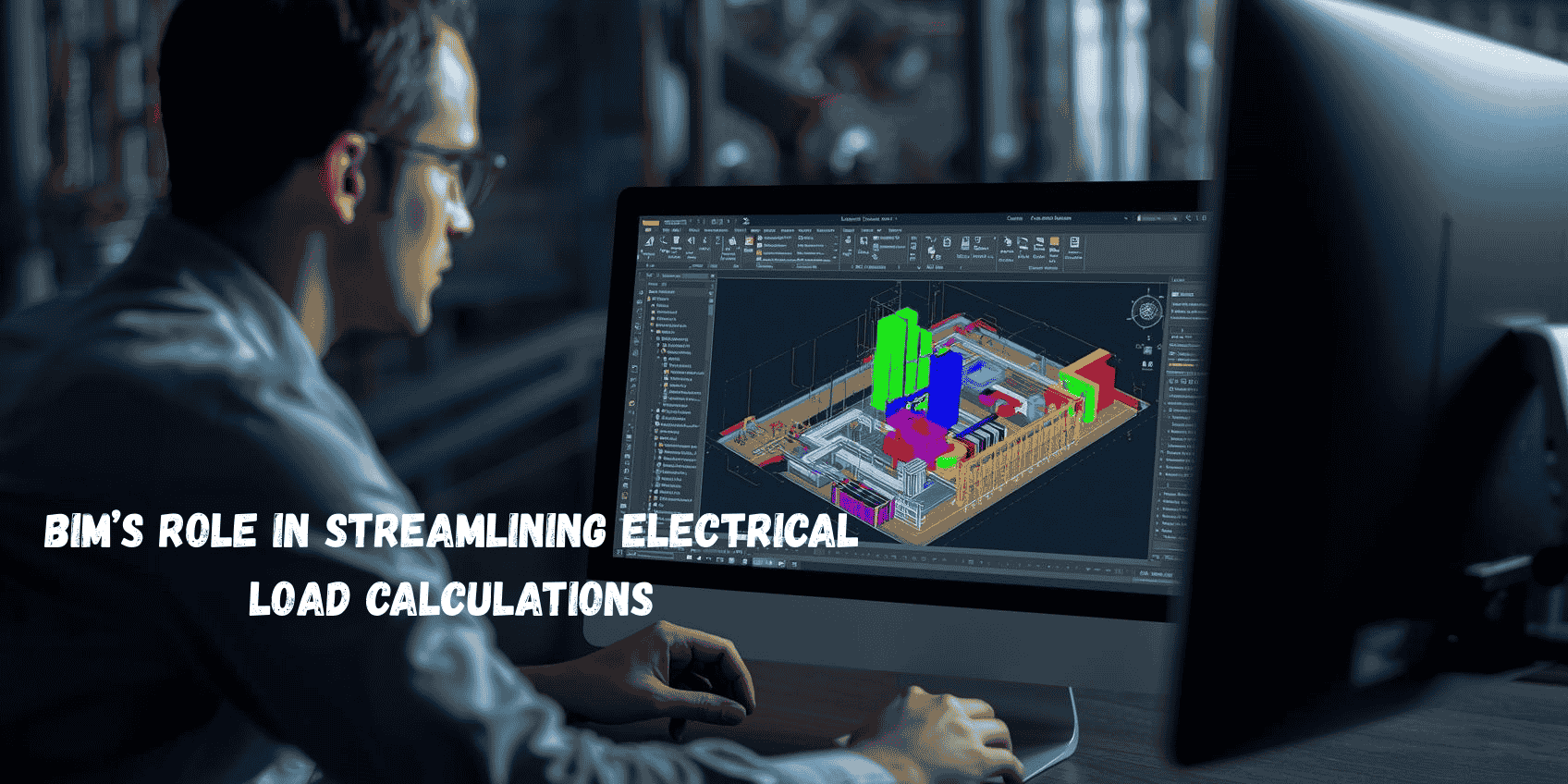
Huzaifa Saifee is a Senior Mechanical Engineer who completed his BEng in Mechanical Engineering from Anjuman College of Engineering. He has been involved in projects such as the design of HVAC services for international hotels like Marriott, Hilton, Intellihotels, and Hyatt. You can learn more about his work and connect with him on LinkedIn.
BIM isn’t just another software; it becomes the shift that transforms your MEP workflow from a manual, drawing-based grind into a truly integrated, problem-solving profession. Through your own evolution, I’ve seen how transitioning from isolated 2D drafting to real-world, data-driven modelling enables you to think like a builder, not just a designer. This blog guides you through practical stories and lessons from project sites, coordination rooms, and global teams. Whether you’re reducing costly clashes, unlocking global job offers, guiding smart teams, or future-proofing your MEP career, BIM gives you the clarity, efficiency, and visibility you need in today’s construction world. For those just starting, mastering BIM means more than keeping up; it means doubling your growth, impact, and opportunities.
Bridging the Gap Between Traditional MEP and BIM Workflows
When you first move from AutoCAD-based coordination to BIM, the biggest wake-up call is realising that BIM isn’t just about drawing in 3D, it forces you to think in 3D.
In traditional design, teams sketch duct runs over reflected ceiling plans, layering services with colours and line thicknesses. It may look neat on paper until it reaches the site, where that “line” quickly becomes a 450×250 duct clashing with a 100 mm sprinkler main.
BIM flips that completely. The model instantly exposes these conflicts and pushes you to consider height clearances, insulation thickness, access space, and even the installer’s route. Suddenly, you’re not just drafting ductwork, you’re designing a buildable, practical system.
That’s the real transition: moving from drawing what “fits on paper” to modelling what “works in reality.” As a young MEP engineer, making this mental shift early is critical. It transforms how you size systems, plan routes, and justify technical decisions.
In traditional CAD workflows, every discipline often works in silos. HVAC layouts don’t “see” electrical routing until coordination week, and plumbing frequently comes last, adjusting on-site. One project even had a simple 100 mm fire riser colliding with a cable tray because teams worked on separate drawings that never talked to each other.
Once a project moves to BIM, everything changes. Every duct, pipe, tray, and riser exists within a single federated model. If a structural engineer modifies a slab opening, the update becomes instantly visible, no chasing consultants, no missed revisions. Accuracy improves naturally because all models are interconnected. This is how BIM skills accelerate MEP careers.
It’s no longer about drawing better, it’s about designing together.
So the real question becomes: are you still designing in isolation, or designing in context?
Limitations in traditional MEP workflows

Older workflows rely on scattered markups, slow email rounds, and delayed consultant feedback. This lack of real-time collaboration means design queries and approvals may drag out for days, sometimes weeks, stalling progress and muddying project scopes. For any team hoping to deliver on time, that’s a losing battle.
Day-to-day, BIM helps architects, MEP teams, and contractors all see the same 3D picture. Instead of explaining over emails or sketching details, you just spin the model and show how things fit. Meetings become quicker, misunderstandings drop, and everyone stays focused on solutions instead of debating over what’s “in scope.” For complex projects, that clarity alone translates into serious time savings.
BIM isn’t some futuristic tool you use once a month; it’s what makes every single day smoother, quicker, and more predictable. From instant clash checks to real material counts and cleaner communication, it delivers genuine efficiency you can feel in your workflow. For anyone serious about their growth in MEP, mastering BIM is not optional; it’s the foundation for more productive, less stressful projects. This is how BIM improves MEP project efficiency and ROI.
BIM as a Catalyst for Career Growth and Higher Salaries
Across the world, large projects, stadiums, airports, and data centres have been demanding MEP BIM specialists more than ever. Countries like the UK, US, UAE, and Australia actively seek engineers who can coordinate, deliver, and manage models throughout the full building lifecycle. If you’re skilled in BIM, your resume isn’t limited by geography. Recruiters and hiring managers filter for these abilities, and the market value is simply higher.
To sum it up, the real message is simple: mastering BIM isn’t just about software, it’s about opening doors to better jobs, faster advancement, and true international mobility while earning more for the same hours. The world is chasing engineers who can do this work, and if you’re smart enough to invest early, the industry does reward you. BIM is more than a skill; it’s the catalyst for real growth in MEP.
Also Read: Top 50 MEP Interview Questions & Answers
Salary Differences Between Traditional MEP Engineers and BIM Engineers
In Dubai, there is a project where the engineering manager specifically requests BIM coordinators during the recruitment process. Traditional MEP designers are offered standard local salaries, while those with BIM experience often receive packages with additional housing stipends, relocation allowances, and direct project bonuses, sometimes totalling 1.5x or even double the base rate for similar years of experience. BIM skills are viewed as essential for high-profile, deadline-driven sites.
Across most markets, from India to the UK and the Gulf, the hiring trend is clear. Traditional MEP engineers continue to receive steady offers, but BIM engineers consistently land higher brackets. Job listings for BIM roles openly advertise pay 20–50% higher than their traditional counterparts, especially when real project leadership or Revit/Navisworks for MEP proficiency is involved. That is not a minor bump; it represents a visible divide driven by project outcomes.
In short, the salary difference is real, consistent, and continuing to widen. For those seeking both immediate and long-term gains in MEP, learning BIM is not just a nice-to-have; it becomes a ticket to higher earnings and faster recognition.
In one last company’s Bangalore office, a junior mechanical engineer started purely on basic CAD duties, marking up mechanical plans and emailing sketches, the kind of work that rarely gets noticed. She volunteered for a BIM upskilling program, mastered Revit and Navisworks workflow for MEP projects, and then led clash-coordination meetings for a multi-tower residential project. In less than fourteen months, she moved from a support role to coordination lead, handling multidisciplinary meetings directly with architects and contractors. Management recognised her ability to resolve complex routing conflicts and steer the team smoothly, which led to a significant promotion and a 35% salary jump.
Also Read: How BIM is Enhancing Urban Design: A Comprehensive Guide
Expanding Career Horizons with BIM Skills
With BIM expertise, you’re no longer limited by geography. Global companies want engineers who can handle smart buildings, sustainable design, and advanced prefabrication workflows.
Resumes featuring advanced BIM project experience, like 4D model sequencing or parametric design optimisation, are often fast-tracked for jobs in the UK, US, and Australia. Complex sectors such as airports, stadiums, hospitals, and data centres increasingly require BIM proficiency as an entry ticket
Simply put: investing in BIM skills isn’t just about keeping up, it’s about leaping ahead. You don’t just unlock access to international jobs and advanced responsibilities; you become part of the future direction of MEP engineering. For anyone hungry to expand their horizons, BIM is the greatest passport you’ll ever have.
When engineers began their careers in MEP, their days often started with placing ducts and pipes according to instructions, drafting, and updating. The moment the team gets serious about BIM, they have to move from “drawing what’s told” to actually driving the logic behind each system. Suddenly, they are running weekly clash reviews, presenting to architects, and making coordination calls that shape how everyone else works. Instead of being just a pair of hands, BIM gave them the bigger picture and the confidence to lead it.
Finally, BIM project leaders set the tone for collaborative, transparent teamwork. With every discipline working inside the same model, finger-pointing decreases and shared problem-solving increases. When you facilitate model reviews, involve everyone, and resolve challenges together, your team works smarter and safer. Good leadership isn’t just technical; it's making everyone around you better.
From real experience, mastering BIM skills is the launchpad for real project authority. You stop chasing tasks and start steering outcomes, building a reputation as someone who gets things done. If you want to move from the drawing board to the lead chair, BIM is the surest catalyst. This is how BIM skills double growth for MEP engineers.
How BIM is Helping MEP Engineers Access Global Opportunities

Once you deliver one or two international projects, you start receiving offers for both short-term secondments and full-time relocations, sometimes from client referrals, sometimes from direct recruiter searches. Companies want MEP engineers who can hit the ground running with BIM, speak the global design language, and collaborate confidently in virtual teams. Engineers routinely move from remote BIM clash detection roles in India to leading site interface meetings in Dubai or joining UK hospital builds, all in just two to three years.
If you’re deliberate about learning BIM, taking on global work even from a local base, and documenting your results, the path opens up fast. International clients and recruiters don’t just want software skills; they want evidence of practical project outcomes, solid problem-solving, and the mindset to work as part of distributed teams. BIM is the toolkit that levels out the playing field and lets Indian engineers unlock global opportunities, often sooner than they think. It’s genuine, attainable, and the single best investment you can make for an international MEP career.
How BIM Training Positions an Engineer for Leadership Roles
BIM training naturally moves you beyond solo technical work. With federated models, you’re frequently leading BIM coordination reviews, resolving multidisciplinary challenges, and setting up workflows that keep everyone aligned. You’re guiding architects, contractors, and site teams rather than just following instructions. It’s this collaborative influence that makes you a natural candidate for project leader roles.
Genuine BIM training does a lot more than upgrade your technical skillset; it becomes what places you at the heart of big decisions, multidisciplinary teamwork, and high-stakes problem solving. That’s the foundation every real project leader stands on. If your goal is to step up, influence outcomes, and guide teams, BIM is not only helpful, it’s critical.
Future-Proofing Your Career with Continuous BIM Upskilling
Construction technology evolves fast. BIM now includes not just 3D, but energy modeling, AR site checks, and even AI-driven design validation. Those who keep learning new BIM modules, plug-ins, and workflows remain at the top of the shortlist for exciting, innovative teams. Staying static puts you at risk of being out of demand as project requirements rapidly advance. Continuous BIM learning means you’re prepared to jump into new project types, data centres, smart buildings, and sustainable design, without the stress of scrambling for the basics. That flexibility makes you far more valuable, shields you from downsizing, and lets you pivot quickly when business needs or job markets change.
Why Firms Are Increasingly Prioritising BIM-Trained Teams
BIM-trained teams don’t just minimise mistakes; they elevate the bar for quality. Models track design decisions, revision histories, and code compliance, giving firms a transparent record they can use in client reviews, QA/QC workflows, and regulatory audits. Accountability increases, and everyone from designers to owners can see who did what, when, and why.
With BIM, firms deliver visuals and simulations that clients can understand walkthroughs, progress animations, and real-time updates. This clearer communication builds trust, reduces change-order headaches, and keeps project goals aligned. Happy clients are repeat clients, and word-of-mouth spreads quickly.
In today’s global market, more owners and investors demand BIM as a prerequisite for contracts. Firms want to win these bids and stand out from competitors. By building strong BIM-trained teams, they signal readiness for complex, high-profile jobs, including international work and innovative project types.
Firms aren’t prioritising BIM just for buzzwords. They see it as the cornerstone of better projects, cheaper, faster, higher quality, and more client-friendly. For MEP engineers, being part of a BIM-trained team means you’re at the leading edge of the industry, where the most exciting and rewarding work happens.
Also Read: Boost Your MEP Engineering Career with BIM Mastery
Future BIM Skills for Long-Term Growth
The global market is moving aggressively toward sustainable, energy-efficient design. Learning the basics of energy modeling, LEED or IGBC certification frameworks, and how to integrate sustainability checks within your BIM process keeps you competitive as buildings become smarter and greener.
AI-driven tools are starting to automate routine checks, optimise layouts, and even simulate system behavior in MEP. If you invest time in understanding AI/ML fundamentals, or even just how to use parametric plugins and automation scripts, your role becomes not just about model management, but about leveraging smart systems to behave, avoid errors, and create more value.
On high-stakes projects, technical prowess alone isn’t enough. Engineers who master presentation skills, stakeholder negotiation, and multilingual communication (especially English, but even the basics of Arabic or European languages) move faster into international or leadership positions. BIM expertise is valued, and when paired with great people skills, nobody holds you back.
Pairing BIM with strong digital collaboration, data analytics, sustainability know-how, basic AI/automation, and effective communication makes you truly future-ready. The industry’s fastest-growing, highest-paid, and most influential engineers almost always combine these technical and soft skills. For anyone committed to long-term growth, not just short-term wins, this is the blueprint to follow. This makes these BIM tools the best for MEP coordination and clashes.
BIM Shaping the Future of MEP Careers in the Next 5–10 Years
Several team members in India now work on remote BIM projects for offices in the Middle East, the UK, and Australia, all without relocating. One engineer supported a data centre design in the UAE by running model coordination, BIM clash detection, and documentation entirely from Mumbai while joining site meetings via video. Firms increasingly prioritise BIM skills and collaboration over physical proximity, enabling engineers who master these tools to build truly international careers without leaving their home base. These are some career benefits of clash detection skills in MEP.
In the coming years, the boundary between BIM and other digital tools, like AI-driven design, 4D/5D sequencing, AR/VR site walkthroughs, and IoT building integration is already beginning to blur. Engineers who start with BIM will naturally move towards using these technologies for energy modeling, predictive maintenance, and real-time site validation. BIM won’t be a standalone skill; it will be the central platform around which the rest of construction technology revolves.
BIM is rapidly moving from a “nice-to-have” to a cornerstone of real career growth, influence, and stability in the MEP world. In the next decade, engineers who embrace and adapt to BIM won’t just survive; they’ll lead, innovate, and define the future of how buildings get built and operated. For anyone aiming to future-proof their MEP career, BIM isn’t an option; it’s the path forward.
Conclusion
If you’re serious about making your mark in MEP, embracing BIM is non-negotiable. From local jobs to high-tech global builds, BIM-trained professionals become the ones leading meetings, finding solutions, and landing the best offers, whether it’s salary, senior roles, or international mobility. The construction industry is only becoming more digital, more data-driven, and more reliant on integrated workflows. Those who invest in continuous BIM upskilling and pair it with collaboration, sustainability, and communication skills drive the future of engineering. In short: BIM isn’t just a tool; it’s your career accelerator and safety net for the next decade and beyond.
For those considering the upskilling route, Novatr’s BIM Course for MEP Engineers offers a solid starting point, providing in-depth exposure to BIM workflows, tools, and computational design processes aligned with industry expectations.
Was this content helpful to you





.png)
